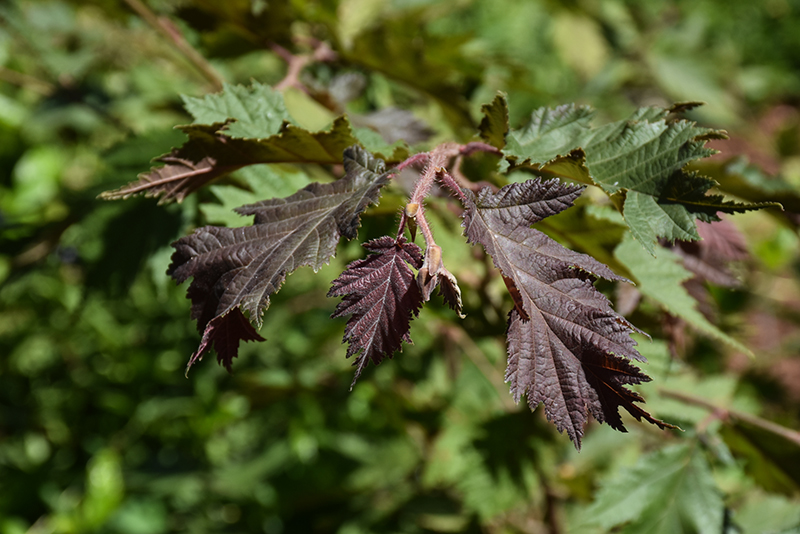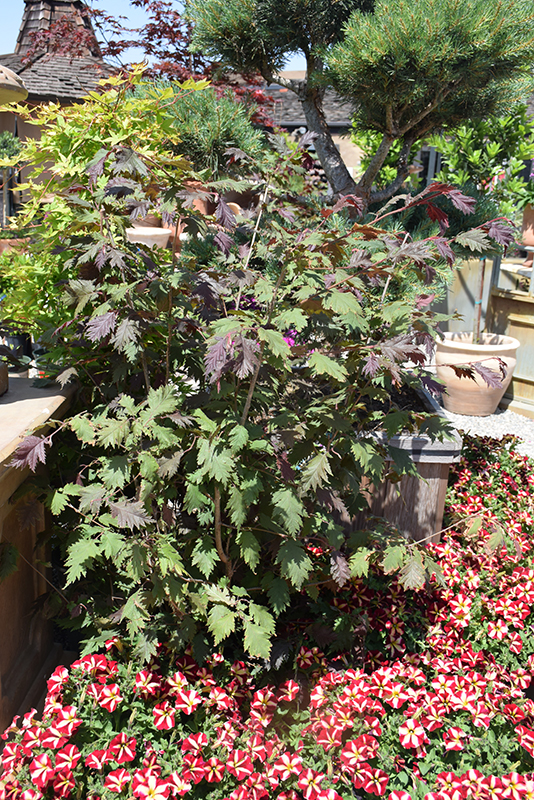Filbert, Burgundy Lace Corylus avellana 'Burgundy Lace' Height: 20 feet Spread: 15 feet
Sunlight:
Hardiness Zone: 4a Other Names: European Filbert, European Hazel Brand: J. Frank Schmidt & Son Co. Description: A large shrub or small tree featuring lacy, deeply dissected burgundy leaves that mature to bronze-green in late summer; slender red catkins in late winter; small edible hazelnuts can develop if a suitable pollinator is nearby. Ornamental Features Filbert, Burgundy Lace is draped in stunning red catkins hanging below the branches from late winter to early spring before the leaves. The flowers are excellent for cutting. It has attractive coppery-bronze-variegated grayish green foliage with hints of burgundy which emerges burgundy in spring. The deeply cut lobed leaves are highly ornamental and turn outstanding shades of red and in the fall. Landscape Attributes Filbert, Burgundy Lace is a multi-stemmed deciduous shrub with an upright spreading habit of growth. Its relatively fine texture sets it apart from other landscape plants with less refined foliage. This shrub will require occasional maintenance and upkeep, and is best pruned in late winter once the threat of extreme cold has passed. It is a good choice for attracting squirrels to your yard. Gardeners should be aware of the following characteristic(s) that may warrant special consideration; Filbert, Burgundy Lace is recommended for the following landscape applications; Planting & Growing Filbert, Burgundy Lace will grow to be about 20 feet tall at maturity, with a spread of 15 feet. It has a low canopy with a typical clearance of 2 feet from the ground, and is suitable for planting under power lines. It grows at a medium rate, and under ideal conditions can be expected to live for approximately 30 years. This shrub does best in full sun to partial shade. It prefers to grow in average to moist conditions, and shouldn't be allowed to dry out. This plant does not require much in the way of fertilizing once established. It is not particular as to soil type or pH. It is highly tolerant of urban pollution and will even thrive in inner city environments. This is a selected variety of a species not originally from North America.![]()
![]()
![]()
![]()
![]()
![]()
![]()
![]()
![]()
![]()
![]()
![]()
![]()
![]()


